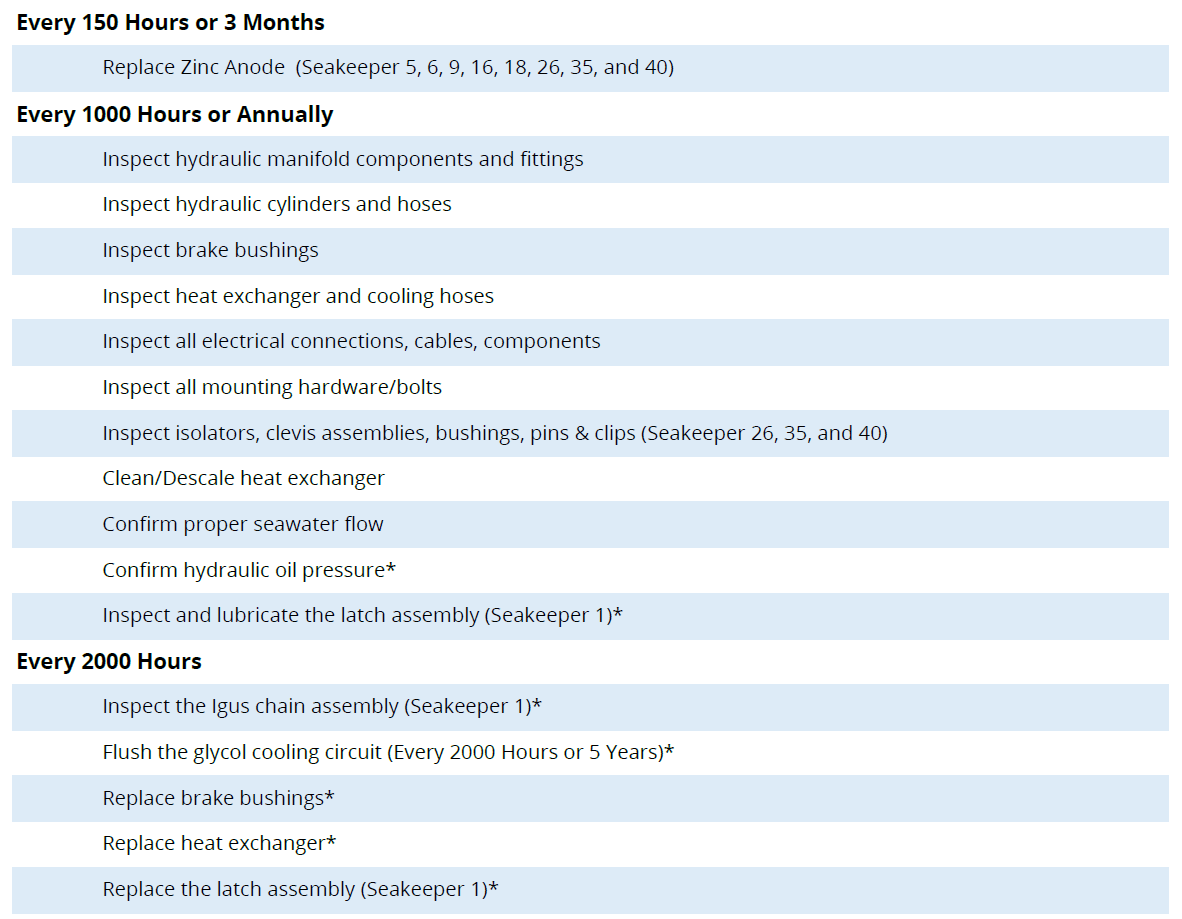Seakeeper 18 Operation Manual (90673-2); S/N 18-234-2475 to Current
5.0 Maintenance
5.1 Maintenance Introduction
Seakeepers are designed to require minimal maintenance since most of the critical components operate in a sealed enclosure, protected from the corrosive moisture involved with life on the water. Outside of the sphere, the closed-loop hydraulic circuit and the cooling circuit should be periodically inspected.
If the Seakeeper is installed in a wet space, efforts should be made to keep the Seakeeper free of salt residue from either condensation or direct exposure to salt spray. If exposed, a regular wipe down with mild soap and water with a rinse will help limit corrosion and keep the Seakeeper assembly in good cosmetic condition. Refer to the Seakeeper article, How to Care for Your Seakeeper, for details.
If any components of the Seakeeper or its sub-systems will be exposed to environmental temperatures where winterization is necessary for storage. Contact a local dealer for assistance in winterizing your Seakeeper.
The Seakeeper comes standard with sealant and thread locker on applicable fasteners. When reinstalling all fasteners use thread locker and sealant unless otherwise specified.
Reference Documents:

Due to remote start capabilities of MFDs, ENSURE power removed from Seakeeper and flywheel at zero RPM at display/MFD app before removing covers.
Hydraulic Hand Pump Kit is required for servicing the brake. Pressure should NOT be relieved unless this tool is available.
5.2 Scheduled Maintenance Table
The following contains the scheduled maintenance table organized by by RUN hours. Scheduled maintenance is not covered under warranty.

*These tasks must be performed by a certified Seakeeper Dealer.
Find a local Dealer at www.seakeeper.com/find-us
Perform the Recommended Maintenance after the indicated number of Running [RUN] hours or Years since last maintenance, whichever occurs first.
Seakeepers are designed for use in a marine environment and to withstand occasional water spray or splash. Prolonged exposure to seawater, however, can cause premature wear and damage to the unit; therefore, it is important to apply a gentle fresh water rinse following exposure to seawater.
The service intervals are based on ‘average’ use, including operating in various Sea conditions, such as zero or low-speed usage in/around marinas and anchorages vs. different speeds while underway in light or heavy sea conditions. If the customer’s normal operating conditions include extended SEA operation, more frequent service should be considered.